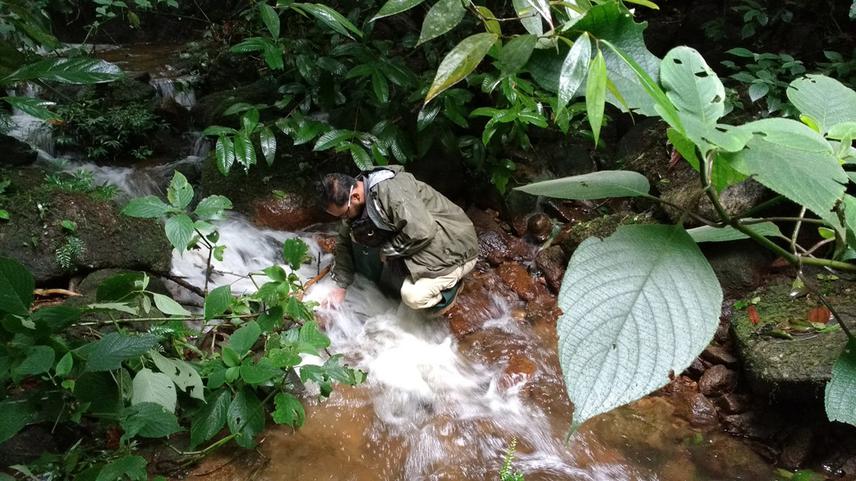Ashish Thomas
Other projects
22 Oct 2014
Conservation of the Endangered Indian Purple Frog through Threat Identification, Area Prioritization and Community Education
The project focuses on obtaining ecological data about Purple frog in order to decipher its habitat preference, distribution range and patterns while also conducting community education programs.

Nasikabatrachus sahyadrensis is an endemic and secretive species, described in 2003 from Western Ghats of India which is also categorized as ‘Endangered’ in the IUCN Redlist, owing to large-scale deterioration and fragmentation of its habitat. The Western Ghats is a long chain of mountains running parallel to India’s western coast, and is identified as very important biodiversity hotspot as well as a UNESCO World Heritage site. This current project is in continuation with the earlier completed project on Nasikabatrachus sahyadrensis (Project 161811: Conservation of the Endangered Indian Purple frog through threat identification, area prioritization and community education) funded by RSGF.
Scientific studies over the last few years have greatly helped in understanding many important aspects about this enigmatic species, especially with relation to its reproductive behaviour and development. However, there still remain many more interesting facets that necessitate further investigation. This project involves both scientific studies and community education programs for addressing conservation issues of endangered and endemic Purple Frog. Scientific investigation is aimed mainly at collecting ecological data about the species that will be useful in determining its microhabitat preferences and predicting potential distribution range through modeling studies. The data will further be utilized to comprehend the impacts of anthropogenic activities on the species distribution patterns and for prioritization of areas where conservation efforts can be targeted.
Finally, community education will help in engaging relevant stakeholders, in this case local community and forest department, for conservation management of the species. Educating and training people who are most closely associated with the target species is of utmost importance in making any conservation program successful.